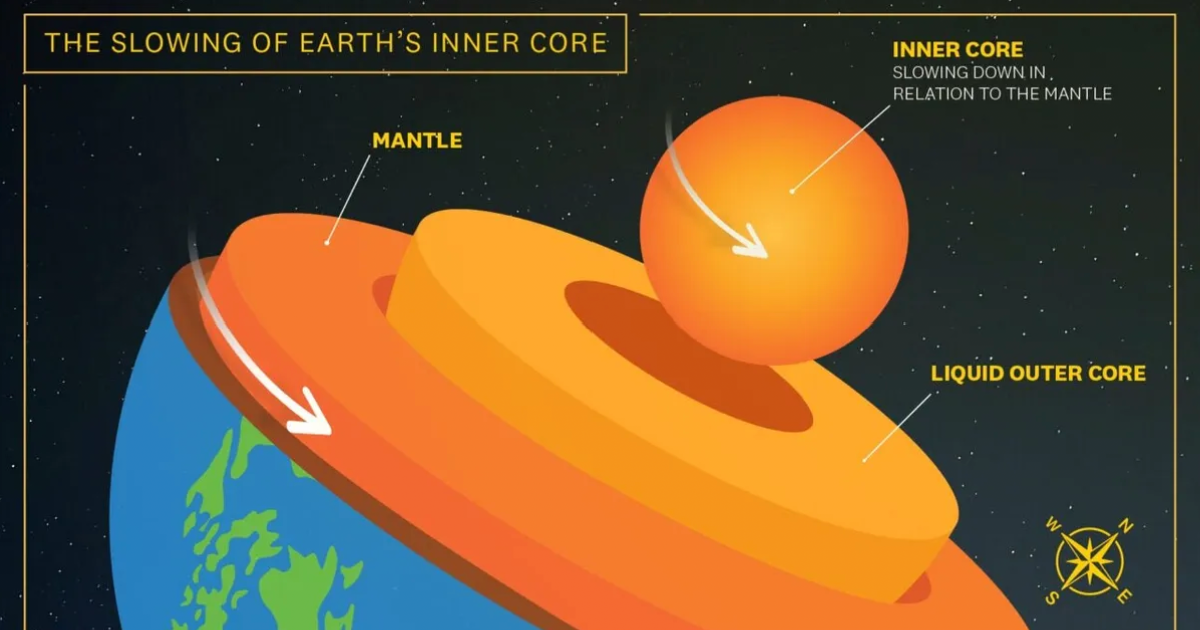
The more we learn about the world we live in – and on – the more curious situations seem to arise.
Then, we have to parse whether or not those situations are normal or could end up negatively impacting our little human lives.
So, what does it mean that Earth’s inner core is spinning slower and slower?
Let’s find out.
Scientists started tracking the slowdown in 2008, and this is the first time it’s happened since we’ve been measuring the inner core’s speed.
It could eventually affect the whole planet’s rotation and make our days longer – but only slightly.
Potential effects on the geomagnetic field could be big enough for us to notice, though.
The entire planet spins in the same direction at roughly the same speed, since it was formed from the same spinning mass of material.
However, small differences are possible and geologists struggled for a long time to decipher whether the core or the surface was rotating faster.
They studied the core by observing seismic waves from earthquakes as they passed through or bounced off it.
Professor John Vidale of the University of Southern California compared data from 121 earthquakes between 1991-2023. They quakes originated in the Sandwich Islands but the waves were collected in North America, and pairs were categorized by similarity – they passed through the same part of the core.
“We document that many multiplets exhibit waveforms that change and then revert at later times to match earlier events. The matching waveforms reveal times at which the inner core re-occupies the same position, relative to the mantle, as it did at some time in the past.”
The results show that from 2003-2008, the inner core was turning faster than the mantle and crust, but since then, it’s been moving more slowly than the rest of the planet.
It’s still rotating in the same direction, but in comparison to the surface, it’s now moving backward.
That said, the discrepancy is fractions of a degree every year.
“When I first saw the seismograms that hinted at this change, I was stumped. But when we found two dozen more observations signaling the same pattern, the result was inescapable.”
Even a small slow-down requires the application of immense forces. Researchers attribute the change to churning in the liquid outer core and the gravitational force applied by areas of the mantle and crust that are extra dense.
Some of this will transfer to the surface and result in longer days – though only by a thousandth of a second or so.
It could affect the magnetic field by reversing its direction, though no one is entirely sure.
Yet.
If you thought that was interesting, you might like to read a story that reveals Earth’s priciest precious metal isn’t gold or platinum and costs over $10,000 an ounce!